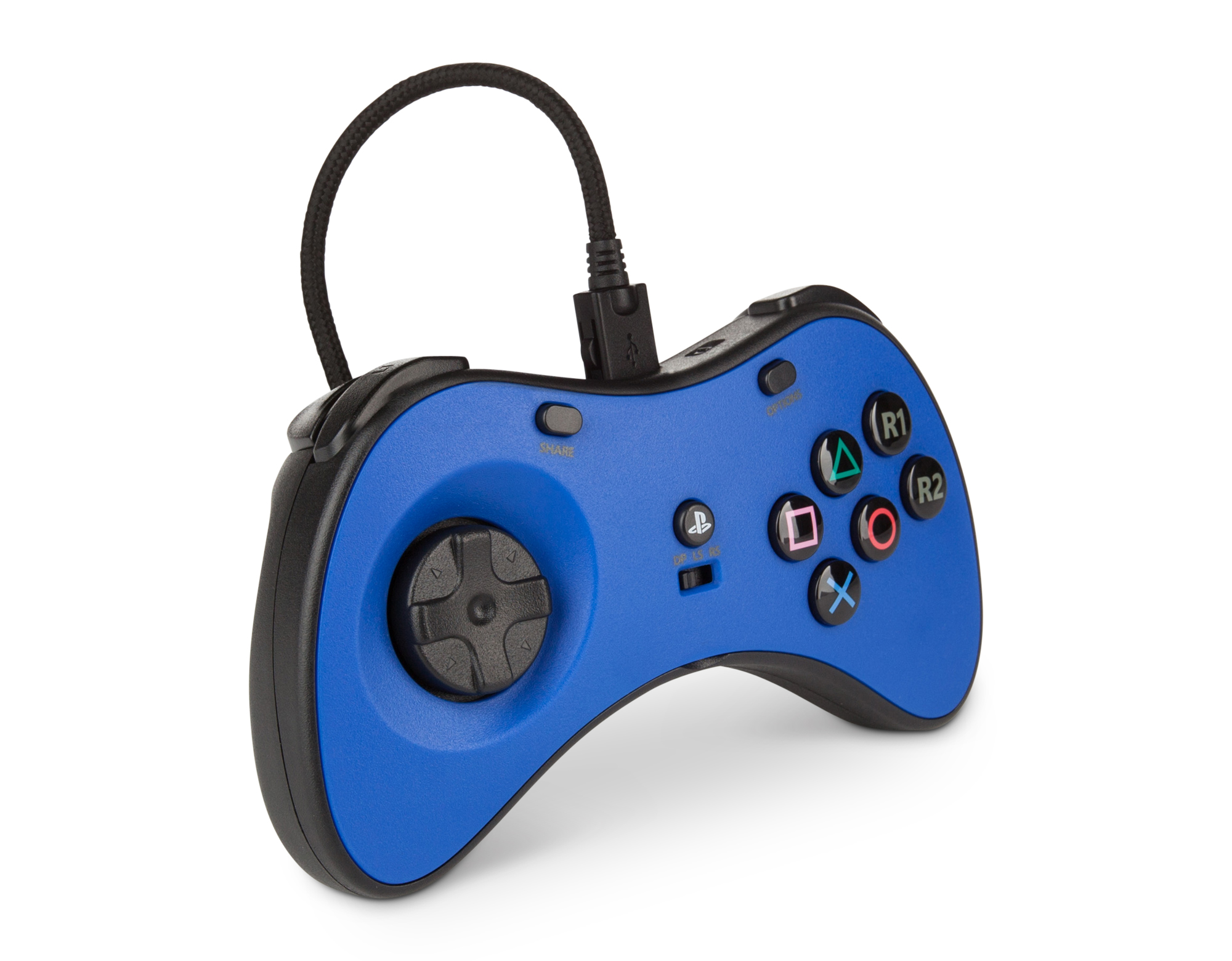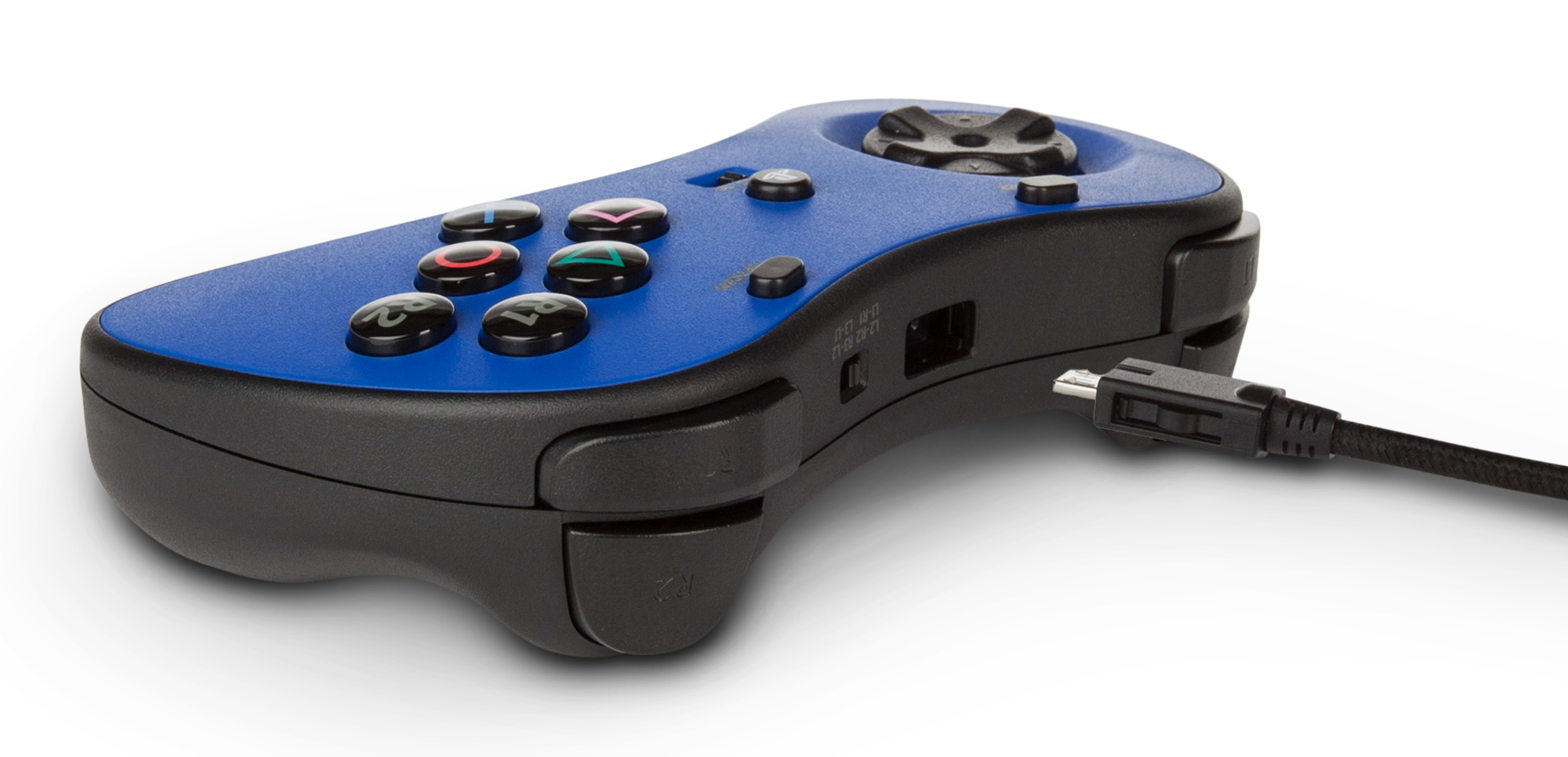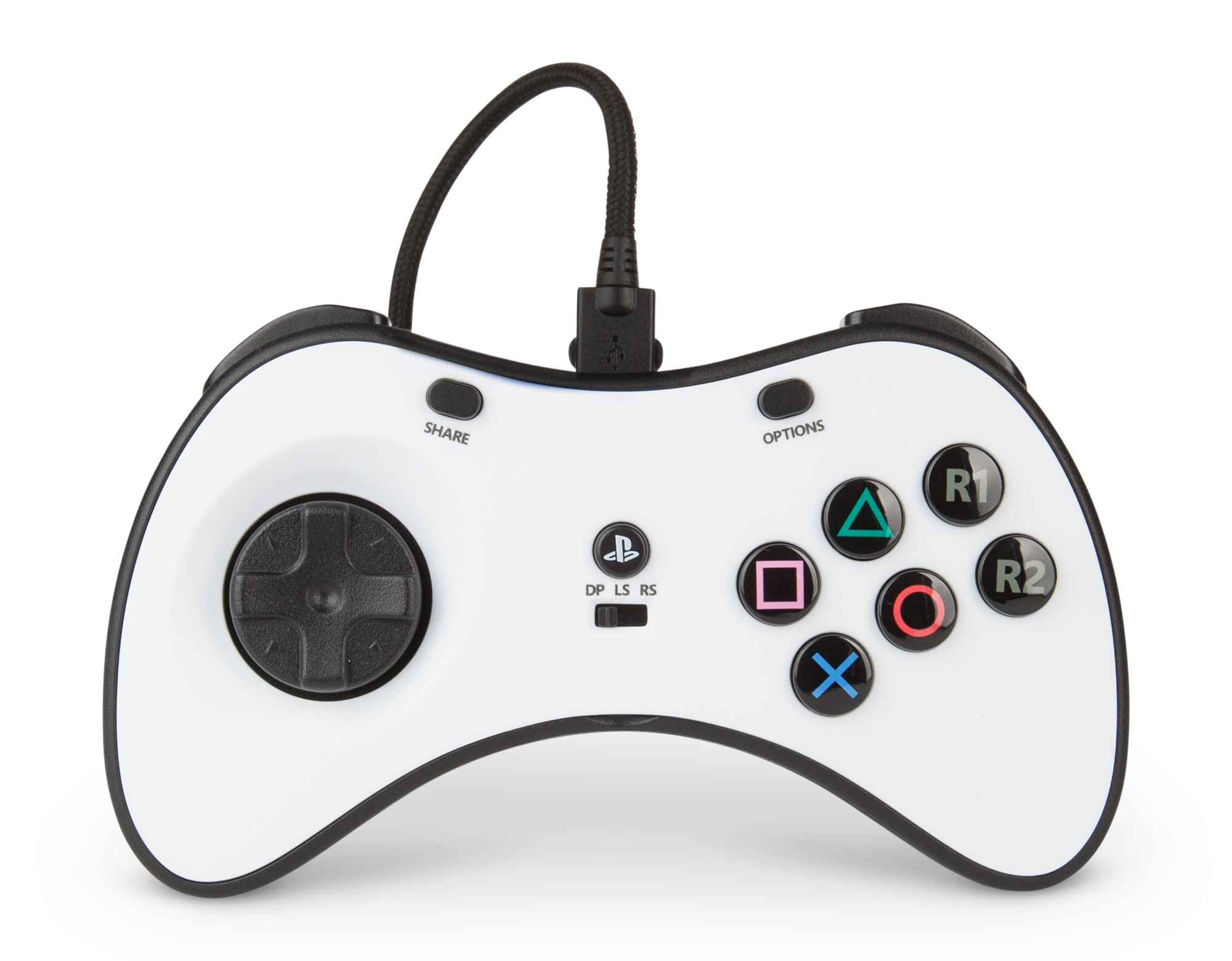Most big fighting games right now are designed with a stock controller in mind. Mortal Kombat 11, Tekken 7, King of Fighters XIV, and even the various Arc System Works “anime fighters” all work well enough with four face buttons, so you can get by with a standard DualShock 4 or Xbox One pad.
If you’re into a six-button game like the Street Fighter series, though, it can be helpful to pick up a new controller, and for pad players like me, there’s never been a better controller for the purpose than the one that came with the Sega Saturn. That system had an all-star lineup of Japanese arcade fighters, although you had to import a lot of them, and it’s why I’m a pad player to this day.
As such, whenever a company puts out a new six-button fightpad, the natural first point of comparison is the Saturn pad, and PowerA’s FUSION Fightpad… basically is a Saturn pad in all but name. It’s got a couple of extra buttons and switches, but it feels like whoever designed it was specifically thinking of the Saturn pad the entire time.

Above: The FUSION Fightpad for PS4 in blue, left, with its ancestor, a Sega Saturn controller, right.
This is important to note, because a lot of companies working in this niche seem to feel the need to try and reinvent this particular wheel. For example, Hori’s Fighting Commander PRO is pretty good, but it has a strange asymmetric design, and MadCatz’s recent update to its FightPad Pro looks like a kitchen appliance. Conversely, PowerA’s FUSION pad seems to be operating on the assumption that perfection has already been attained (a conclusion that seems to have been shared by Hori’s new model of the Fighting Commander from earlier this year), so why mess with it?
The FUSION Fightpad is wired, with a nearly 10-foot (3-meter) detachable cable, and swappable magnetic faceplates for the sake of personal customization. It moves the “R1” and “R2” buttons onto the controller’s face, in addition to featuring two bumper and two trigger buttons. All of the buttons are exactly the same size, with rounded surfaces and a tight fit into the frame, so they don’t rattle or squeak in operation.
The FUSION’s directional pad is springy and responsive (when you set it right, but we’ll get to that), and after testing it for a few evenings, it felt like it was always giving me the inputs I wanted. The problem with using a stock controller for fighting games is that you’re often asking for an unusual degree of precision from it, particularly from the pad, which is more than many consoles’ base pads are capable of delivering. However, the FUSION always came through with exactly the directions I wanted every time.
Naturally, the Fightpad is designed for fighting games, so it’s only got one D-pad and six face buttons, plus the Home button, two bumpers, and two “triggers.” It doesn’t have thumbsticks at all, which means it’s only useful for fighters and retro games. Still, it does a great job with those. It’s actually surprisingly good for old arcade “shmups,” where one pixel’s positioning can be the difference between life and death.
My one real issue with the FUSION Fightpad has to do with its selector switch. You have the option to change the D-pad so it’s emulating a controller’s left stick, D-pad, or right stick. I found that the “LS” function was about as responsive as you could possibly want, but if you switched it to emulate a D-pad, it had a problem registering up-right commands. I tested it on two separate units, and when set to “DP,” I had about a 50-50 chance that up-right on the pad would come out as up. I’d try to jump forward and do a neutral jump instead. It didn’t actually cost me any online matches – I did that for myself, as I am terrible – but I could see it being a problem if you wanted to take the FUSION into a competitive setting.
Pros:
- Highly responsive buttons and D-pad. We put it through the wringer for a weekend, testing it against half a dozen different fighting games, and it always came through.
- Lightweight but durable.
- It’s made for fighters, but you can get a lot of use out of it for the retro games in your collection.
- A comically long braided cord means you can still play your games from across the room.
Cons:
- The rare PowerA product that’s more expensive than its competition.
- The DP setting for its pad is a little busted. Set the face switch to LS, then forget it’s there unless you need the right stick for something.
- Like a lot of third-party PS4 controllers, the Fightpad’s home button doesn’t work for remotely waking up the console from sleep mode. You’ll need to keep your Dual Shock 4 handy for turning your PS4 on from the couch.
The FUSION Fightpad is also weirdly expensive, at an MSRP of $59.99. This isn’t just strange for PowerA, which otherwise makes inexpensive-but-serviceable third-party controllers, but it’s also odd for this particular market. Arcade sticks can easily cost you $150 or more, so if you’re going to invest in a new controller for fighting games, pads are usually the cheapest available option.
At $60, the Fightpad seems to be priced to compete with getting a new DualShock 4 or stock wireless Xbox One controller, rather than the other available six-button pads. It’s a full $20 more than Hori’s new Fighting Commander, for example, which has many of the same features.
The FUSION Fightpad does feel like it was made with a lot of care and attention, though. It’s pricey for its niche, but the Fightpad is a modern update to an obscure classic piece of hardware. If you play enough fighting and/or retro games to be interested in an old-school six-button pad, this is probably the best all-around option on the market if you don’t mind spending the extra cash.
[Note: PowerA provided two FUSION Fightpad PS4 units for the purpose of this review.]









Published: Oct 30, 2019 01:52 am